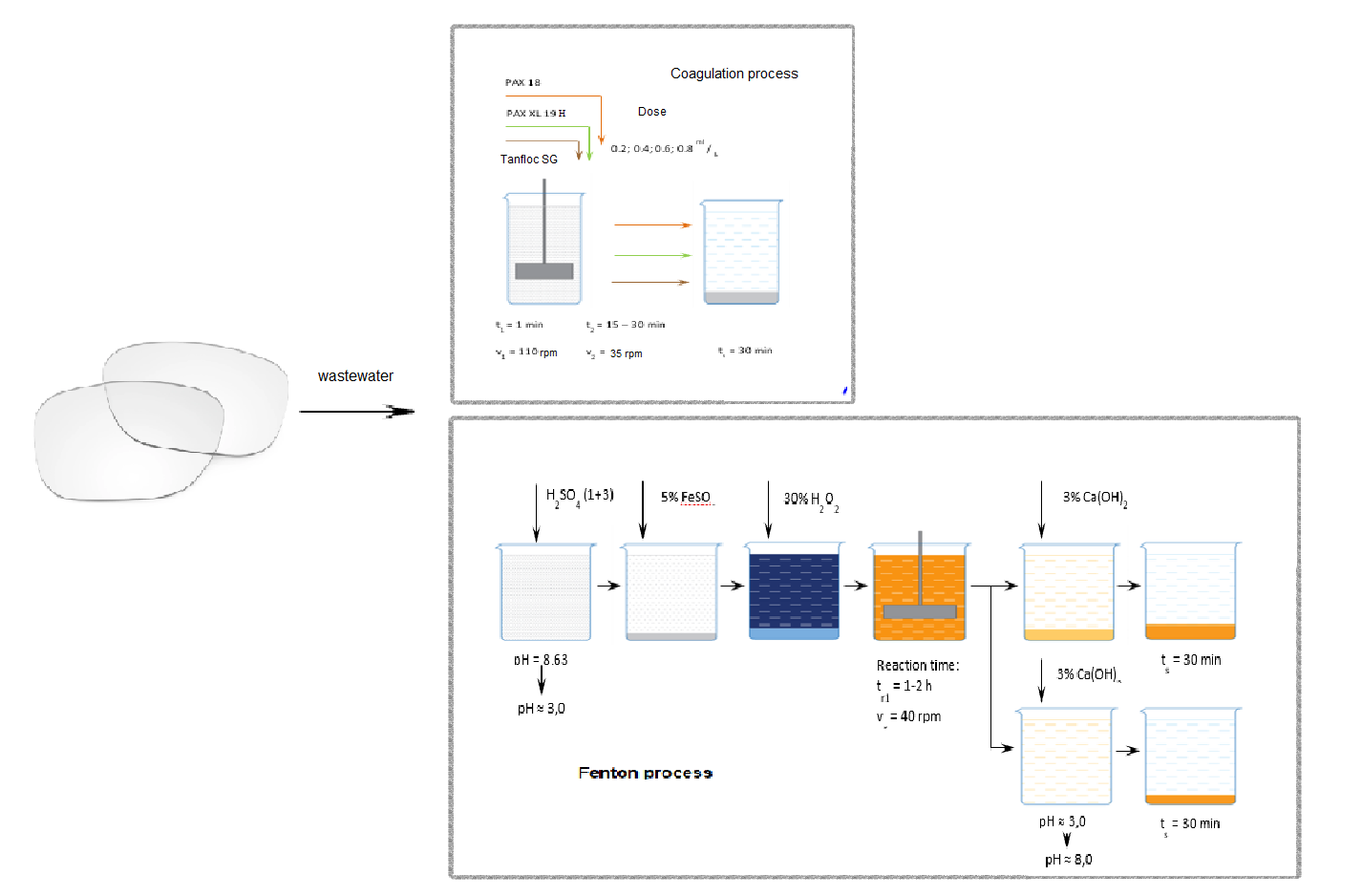
250 million people worldwide suffer from visual impairment. 64% of them wear glasses. More than 80 percent of all eyeglasses worn today have plastic lenses. Plastic lenses made of polycarbonate discs are created through the process of machining which requires the use of a coolant. The ensuing wastewater contains chips, water, and coolant. In the studied facility, the chips are separated by filtration. Water and coolant are returned to the machine tool. Due to the low particle weight some of the plastic dust flotates and creates foam. If there is too much foamed dust, a skimmer is added. In order to avoid machine damage and product quality deterioration, the mixture in circulation is changed every 24 hours. For the purpose of the study, wastewater was sampled from the plastic lenses facility. It was characterized by a high COD value of 11 200 - 20800 mg/L, a turbidity of 260-870 NTU, and a colour of about 200 mg/L. Wastewater with these parameters should not be discharged into the sewage system. For their treatment, a coagulation process (PAX 18 and PAX XL 19 H, Tanfloc SG) and Fenton process were applied. The application of aluminum coagulants resulted in a maximum reduction of COD of 55%. Maximum COD reduction after the Fenton process was 50.7%.
Total file downloads: 6